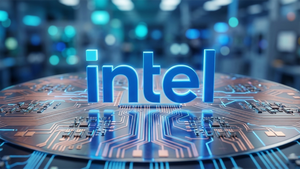
The Pentagon is embarking on a transformative initiative, leveraging artificial intelligence (AI) to dramatically accelerate discrimination, harassment, and Inspector General (IG) investigations. This move, outlined in recent memos from Secretary of Defense Pete Hegseth, aims to overhaul the existing oversight processes, mandating AI-driven solutions to classify complaints, enforce deadlines, protect privacy, and maintain rigorous audit logs. The ambitious goal is to resolve discrimination and harassment complaints within 30 days, signaling a significant shift in how the military addresses internal grievances.
This strategic pivot, however, comes with a dual imperative: achieving unprecedented efficiency while rigorously adhering to ethical AI principles. As AI systems become deeply embedded in government oversight, questions surrounding potential algorithmic bias and the transparency of automated decision-making loom large. The financial markets are closely watching, anticipating how this integration of advanced technology will impact defense contractors, AI solution providers, and the broader regulatory landscape, particularly concerning the ethical deployment of AI in sensitive governmental functions.
AI at the Forefront of Pentagon Investigations: A Detailed Look
The directive from Secretary of Defense Pete Hegseth is clear: AI will be a cornerstone in reforming the Pentagon's Inspector General process, as well as its Military Equal Opportunity (MEO) and Equal Employment Opportunity (EEO) programs. The core of the memo pushes for AI, with essential human oversight, to significantly speed up the processing of complaints. This includes using AI to intelligently classify and route incoming complaints, rigorously enforce investigative deadlines, safeguard privacy throughout the process, and maintain comprehensive audit logs for accountability within IG inquiries. A critical, and ambitious, target is to address and resolve discrimination and harassment complaints within a mere 30 days, a stark contrast to previous, often protracted, timelines. Furthermore, the reforms aim to mitigate the career impact of early investigation findings on service members, which Secretary Hegseth believes will "liberate" an IG process he views as having been "weaponized."
The timeline for these changes is aggressive. Specifically for IG inquiries, the memos mandate the use of AI during an initial "credibility assessment" phase. This phase is designed to be completed within seven days of a complaint's filing to quickly determine if a full investigation is warranted. Beyond the IG, the Director of the Defense Human Resources Activity has been tasked with allocating specific funding to leverage AI and other IT solutions to expedite EEO investigations, particularly those involving high-ranking general/flag officers and senior executives. This highlights a targeted effort to streamline oversight at all levels of the military hierarchy.
Key players in this initiative include Secretary of Defense Pete Hegseth, whose memos initiated these reforms, and the Director of the Defense Human Resources Activity, responsible for implementing the AI-driven EEO investigation acceleration. The Chief Digital and Artificial Intelligence Office (CDAO) is also a central figure, as its procurement, strategy, and policy development for AI are currently under comprehensive assessment by the DoD Office of Inspector General (OIG). This ongoing OIG evaluation underscores the immediate scrutiny and commitment to ensuring that AI adoption across the department is effective, ethical, and aligned with strategic objectives. While specific market reactions have yet to fully crystallize, the announcement has sparked considerable interest among technology providers and defense contractors, who see both significant opportunities and new compliance challenges.
Companies Poised to Win or Lose in the AI Oversight Revolution
The Pentagon's aggressive push to integrate AI into its investigative processes creates a new landscape of opportunities and challenges for various companies. On the winning side, AI solution providers specializing in natural language processing (NLP), data classification, and secure data management stand to gain significantly. Companies like Palantir Technologies (NYSE: PLTR), with its established government contracts and expertise in big data analytics and AI platforms, could see increased demand for tailored solutions to manage and analyze vast amounts of complaint data. Similarly, firms offering ethical AI frameworks and bias detection tools, such as IBM (NYSE: IBM) or specialized startups, may find a burgeoning market as the DoD prioritizes "equitable" AI to minimize unintended bias. These companies will be crucial in helping the Pentagon develop and deploy AI systems that meet stringent ethical guidelines while maintaining efficiency.
Conversely, traditional defense contractors that are slower to adapt to AI integration or lack robust AI capabilities in their offerings could face disadvantages. While not directly involved in investigative software, their broader government contracts may increasingly require AI-centric components, pushing them to acquire or partner with AI specialists. Furthermore, companies that fail to demonstrate transparent, auditable, and bias-resistant AI solutions could lose out on lucrative government contracts. The emphasis on "traceable" and "governable" AI means that vendors must not only provide powerful technology but also robust methodologies for explaining AI decisions and ensuring accountability, creating a potential barrier for less mature AI offerings.
The regulatory implications of this shift also mean that companies providing legal tech or compliance solutions may need to integrate AI ethics and government oversight standards into their products. Firms offering software for case management, audit trails, and privacy protection, which can be enhanced by AI, are also in a strong position. The rapid deployment and the high-stakes nature of discrimination and IG investigations mean that the Pentagon will likely prioritize proven, secure, and scalable AI solutions, favoring established players with a track record of reliability in government environments. This could lead to consolidation or strategic partnerships within the AI sector, as smaller, innovative AI firms seek to leverage the market access and resources of larger defense-focused entities.
Wider Significance: AI's Ethical Frontier in Government
The Pentagon's decision to deploy AI in sensitive investigative processes extends far beyond military internal affairs; it represents a critical frontier in the broader industry trend of AI integration into government oversight. This move signals a significant acceleration in the adoption of AI for administrative and ethical compliance functions, pushing the boundaries of how public institutions leverage advanced technology. It fits into a global trend where governments are exploring AI to enhance efficiency, but simultaneously grappling with the complex ethical implications, particularly concerning fairness, bias, and transparency. The DoD's explicit adherence to principles like "equitable," "traceable," and "governable" AI, as outlined in DoDD 3000.09, sets a precedent for other governmental bodies and even private sector entities contemplating similar deployments.
The potential ripple effects on competitors and partners are substantial. Other federal agencies, state governments, and even international organizations are likely to closely observe the Pentagon's successes and challenges. A successful implementation could spur widespread adoption of AI in their own oversight mechanisms, creating a new market for AI solutions tailored to regulatory compliance, human resources, and internal audit functions. Conversely, any significant missteps, particularly concerning algorithmic bias or privacy breaches, could lead to increased skepticism and more stringent regulatory hurdles for AI deployment across the public sector. This could impact not only AI developers but also broader technology companies whose products might eventually integrate with such government systems.
Regulatory and policy implications are paramount. The ongoing assessment by the DoD Office of Inspector General (OIG) of the Chief Digital and Artificial Intelligence Office’s (CDAO) strategy and adoption of AI underscores a proactive regulatory environment. This scrutiny is likely to intensify, potentially leading to the development of new federal guidelines, certifications, or even legislation specifically addressing AI in government oversight. Historically, major technological shifts in government have often been followed by periods of intense regulatory development. Comparisons can be drawn to the early days of cybersecurity regulations or the implementation of large-scale IT systems, where the initial deployment paved the way for a more formalized and regulated operational framework. This event marks a pivotal moment where the theoretical discussions around ethical AI are transitioning into practical, large-scale government application, necessitating robust policy responses.
What Comes Next: Navigating the AI Oversight Landscape
The immediate future following the Pentagon's AI directive will be characterized by rapid implementation and intense scrutiny. In the short term, we can expect a concentrated effort to deploy and refine the AI systems within the 30-day and 7-day deadlines for investigations. This will involve rigorous testing, data integration, and training of personnel to work alongside these new AI tools. Initial reports on the efficiency and fairness of these AI-driven investigations will be critical, shaping public perception and providing early indicators of success or areas needing adjustment. For technology providers, this means a sprint to deliver robust, compliant, and scalable solutions.
Looking further ahead, the long-term possibilities are transformative. If successful, the Pentagon’s model could become a blueprint for AI integration across various government agencies, leading to a more efficient, transparent, and potentially less biased system of internal oversight. This could unlock significant market opportunities for companies specializing in secure AI, explainable AI (XAI), and audit-friendly algorithms. Conversely, challenges could emerge if AI systems perpetuate or amplify existing biases, leading to public outcry, legal challenges, and a potential rollback or significant overhaul of the deployed systems. This necessitates continuous monitoring and adaptive strategies from all stakeholders.
Potential strategic pivots for companies in the AI and defense sectors will involve prioritizing ethical AI development and demonstrating clear methodologies for bias detection and mitigation. Firms that can offer "AI-as-a-service" specifically tailored for government compliance and oversight, with built-in transparency and accountability features, will be well-positioned. Market opportunities will arise in areas like secure cloud infrastructure for AI, AI governance platforms, and specialized training programs for human operators overseeing AI-driven investigations. Investors should watch for early performance metrics, the results of the OIG's assessment, and any subsequent policy developments that could signal shifts in the regulatory landscape or create new demand for specific AI capabilities.
A New Dawn for Government Oversight: Key Takeaways and Investor Outlook
The Pentagon's bold move to integrate AI into its discrimination, harassment, and Inspector General investigations marks a significant inflection point for government oversight and the broader financial markets. The key takeaway is a clear and unequivocal commitment to leveraging advanced technology for efficiency, aiming to resolve sensitive complaints at an unprecedented pace. However, this pursuit of speed is inextricably linked to the imperative of ethical AI deployment, demanding systems that are "equitable," "responsible," "traceable," "reliable," and "governable." This dual focus creates both immense opportunities for innovative AI firms and considerable challenges for ensuring fairness and public trust.
Moving forward, the market will be closely assessing the practical implementation of these AI directives. Success in achieving faster, fairer, and more transparent investigations could catalyze widespread AI adoption across government functions, opening up new multi-billion dollar markets for specialized AI solutions. Conversely, failures related to algorithmic bias or lack of accountability could temper enthusiasm and lead to stricter regulatory frameworks, impacting the growth trajectory of AI in public service. Companies with strong ethical AI frameworks, robust data governance, and proven security credentials will likely emerge as leaders in this evolving landscape.
For investors, the coming months will be crucial. Watch for contract announcements from defense contractors and AI pure-plays that secure Pentagon business related to these initiatives. Pay attention to the results of the DoD OIG's ongoing assessment of the CDAO, as its findings will provide critical insights into the effectiveness and ethical compliance of AI strategies. Any legislative proposals or new federal guidelines concerning AI in government oversight will also be significant market movers. The Pentagon's AI initiative is not just an internal reform; it's a bellwether for the future of AI in governance, offering a compelling case study that will shape technological and ethical debates for years to come.
This content is intended for informational purposes only and is not financial advice







